Special features of delivery addresses - bizarre addresses and their pitfalls for application systems

What do these two place-name signs have to do with your application systems in which you process customer or prospect addresses?
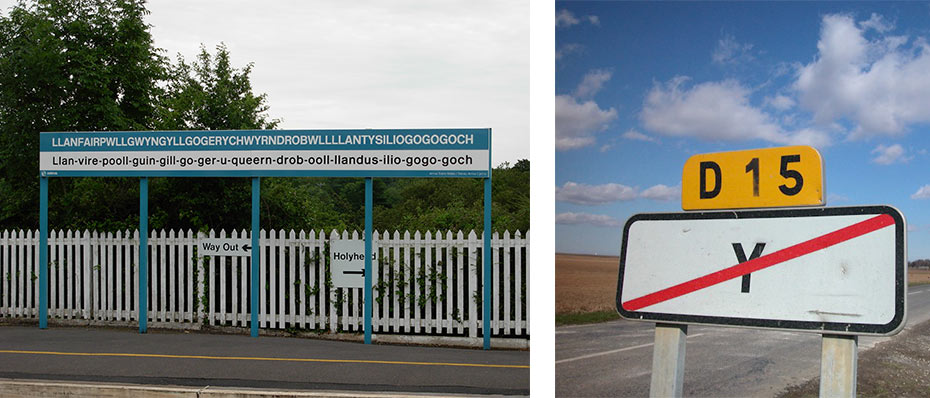
If parcels, packages, contracts etc. are to arrive reliably at the desired destination, the address must be correct. But addresses can be tricky. As customer data experts, we come across bizarre cases from time to time in our daily work. These curiosities make us smile, but they are also excellent for testing our own application systems, be it the registration process or systems such as CRM, ERP or MDM.
Try typing, let alone pronouncing, the longest place name in Europe (58 letters) without any mistakes! "Llanfairpwllgwyngyllgogerychwyrndrobwllllantysiliogogogoch". Even with the highest concentration you will hardly succeed, which is why an address validation tool with good error tolerance should not be underestimated when typing. By the way, the Royal Mail also provides an abbreviation for this: Llanfairpwllgwyngyll. However, error-free input is not much easier here either ;). The longest German place name, "Hellschen-Heringsand-Unterschaar", seems almost simple, but it still strains the field length for the place in some systems. By the way, the partner community of the Welsh word monster is the French village Y. We have often seen systems fail with this place name - the formal check requires at least two characters as input length. This is not an isolated case in Europe: In Norway, for example, the place name Å exists several times.
Street names can also cause a lot of confusion. In Germany there are about 451,000 unique street names. 97.5 per cent of the street names occur less than ten times in Germany. What may not sound like much at first with the remaining two and a half per cent, looks quite different in reality between Flensburg and Garmisch: With 6,234 entries, Hauptstraße is the most frequently occurring street name, followed by Schulstraße (4,947 entries). Especially in the case of the very frequently occurring street names, it is important in the case of a typo in town or postcode that the address validation tool has intelligent error tolerance and assigns the correct town as automatically as possible. If this is not clearly possible, the user should only be shown the places that apply to a typo in a selection list. No one wants to look through a list with almost five thousand entries for Schulstraße.
Municipal administrations usually make sure that a street name exists only once in a place and is therefore unique. Even if a street name exists twice due to incorporations, one of the two streets is renamed in the medium term. Unfortunately, however, not every municipality really pays consistent attention to uniqueness. In Berlin alone, for example, Charlottenstraße exists nine times.
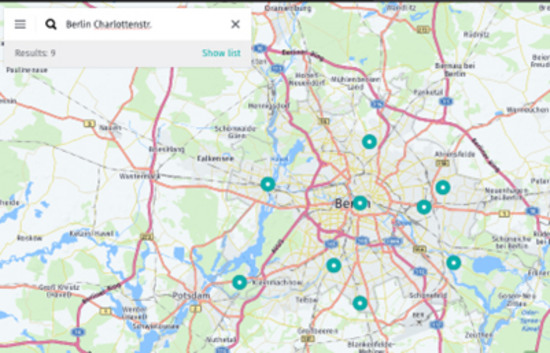
Source: HERE WeGo
Finding the right street can be a game of chance. The correct postcode can often save you from chaos. But that doesn't always help, in which case the district must provide clarity. For many delivery services, the district is usually more important than the postcode anyway. It is a pity, however, if the application system does not offer the possibility to enter or save the district.
Caution: If you include the district on the address label, the next trap lurks here. Internationally, the district is usually placed between the street line and the city line. In Germany, however, the district should be printed above the street line. Historically, this is due to the old reading units of the letter sorting machines of Deutsche Post. These could only read and sort correctly if the street line and postcode/location line were directly below each other. Although the technology of reading units has certainly made great progress in the last 20 years and practically all other countries handle it differently, this anachronistic rule has (unfortunately) still been retained in the current DIN 5008 regarding address format.
For many applications, the postcode is an important anchor point. In Germany, clearly structured five digit numeric. But the postcode can also cause confusion, for example when municipalities have German AND Austrian postcodes at the same time, like the municipalities in Kleinwalsertal or Jungholz in Tyrol. Or Büsingen, which has a German and Swiss postcode - here, four and five digit postcodes suddenly appear for the same place.
In Germany, there are 46 letters between the squares in Mannheim (e.g. "A1") and the longest street name ("Bischöflich-Geistlicher-Rat-Josef-Zinnbauer-Str." in Dingolfing, Bavaria). Both streets have special challenges.
- The squares in Mannheim are partly already rejected by the formal checks because two letters are expected as a minimum input. But even for the data steward, the squares in Mannheim are not always easy. When he reads "Street P 3 14": Which part belongs in the street field and which in the house number field? This is where the systems make the users happy who use a qualified address validation tool that accepts this as one field, checks it and then, if necessary, divides the street name and house number correctly.
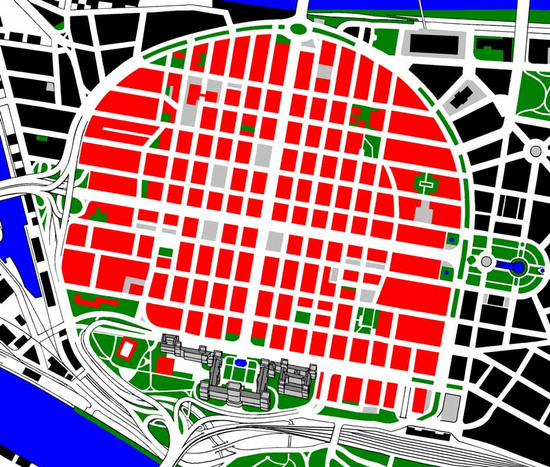
- The "Bischöflich-Geistlicher-Rat-Josef-Zinnbauer-Str." stresses the maximum field length in many systems. Here, too, a qualified address validation tool provides support by automatically inserting a "manageable" abbreviation.
But even addresses that are apparently grammatically incorrect, such as the street "kleines Berg" in Eberswalde, will in most cases be entered correctly in terms of grammar, but incorrectly in terms of addressing without an address validation tool.
A nice test case is also "Westward Ho!" in England, where the exclamation mark is an official part of the name. Often not all special characters are allowed in city and street fields. Or even text in the house number field is not allowed, as required by the not infrequently occurring house numbers such as "65 & A Half" in England.
If you were previously of the opinion that the smallest valid house number was the number "1", then we must unfortunately correct your world view here. In England you will often find house numbers "0", but you don't have to cross the English Channel to find addresses with house numbers "0". You can also find them (occasionally) in Germany. The following case is a correct address including house number confirmed by the municipality: "Wilhelm-Wisser-Str. 0, 23715 Bosau".
“
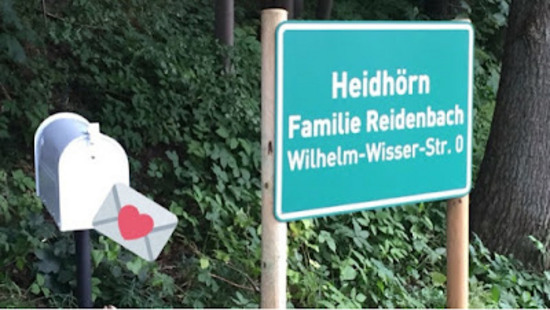
Source: Heidhörnblog: Die Hausnummer 0 und Islandpferde Heidhörn
In Baarle, a border town between Belgium and the Netherlands, things get even wilder. Here, due to the unique and completely complicated course of the border, the nationality designation can also be found on every house number plate. Because here it can happen that the border runs through individual houses: the right side is in Belgium, the left already belongs to Holland.
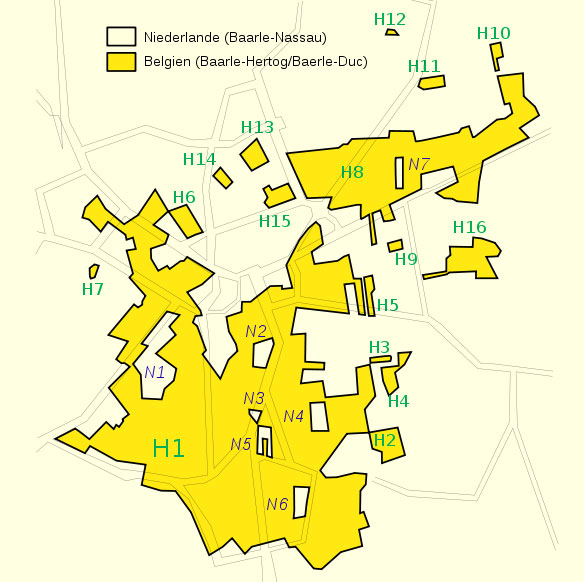
Source: DeWiki > Baarle, Svenskan
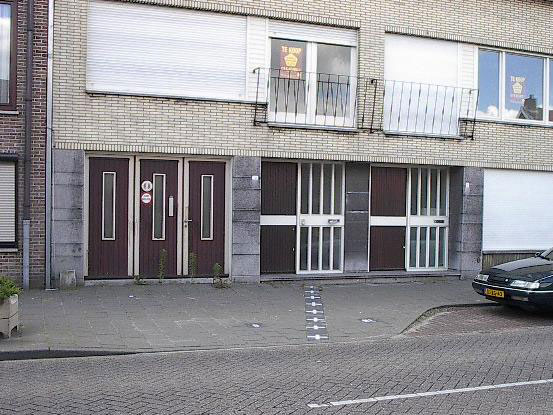
"This house is partly in Belgium and partly in the Netherlands. The borderline is marked by the white paving stones."
Source: DeWiki > Baarle, Lennart Bolks
Effective address management must be able to deal with these - admittedly very special - special cases. Only then can it support data stewards in their daily work in the best possible way and offer end customers an optimal customer experience. As entertaining as these special cases are for us, the additional manual effort they cause when they do not function smoothly costs time, money, nerves and possibly customers. Why not use one of our examples for your address field tests and see how your system copes. Does it blow up any limitations? Does it correct errors automatically? Our experienced consultants will be happy to support you in optimising your system.
In this article we have used some examples to show the considerable differences in the structure of "classical*" addressing. addressing. In the next article we will show you how you can realise a different type of addressing for certain applications with what3words (w3w) or Open Location Codes (OLC), neither of which have the structural diversity of "classical*" addressing. addressing. Yes, you can even use them to address points for which no "classic*" addressing is available. addressing is available. We will discuss the advantages and disadvantages of the two systems and compare them with "classical*" addressing. addressing.
*classical addressing --> addressing with:
District (optional), street, house number, postcode, city, country (international only).
Example:
Wilferdinger Höhe
Rastatter Str. 13
75179 Pforzheim
GERMANY